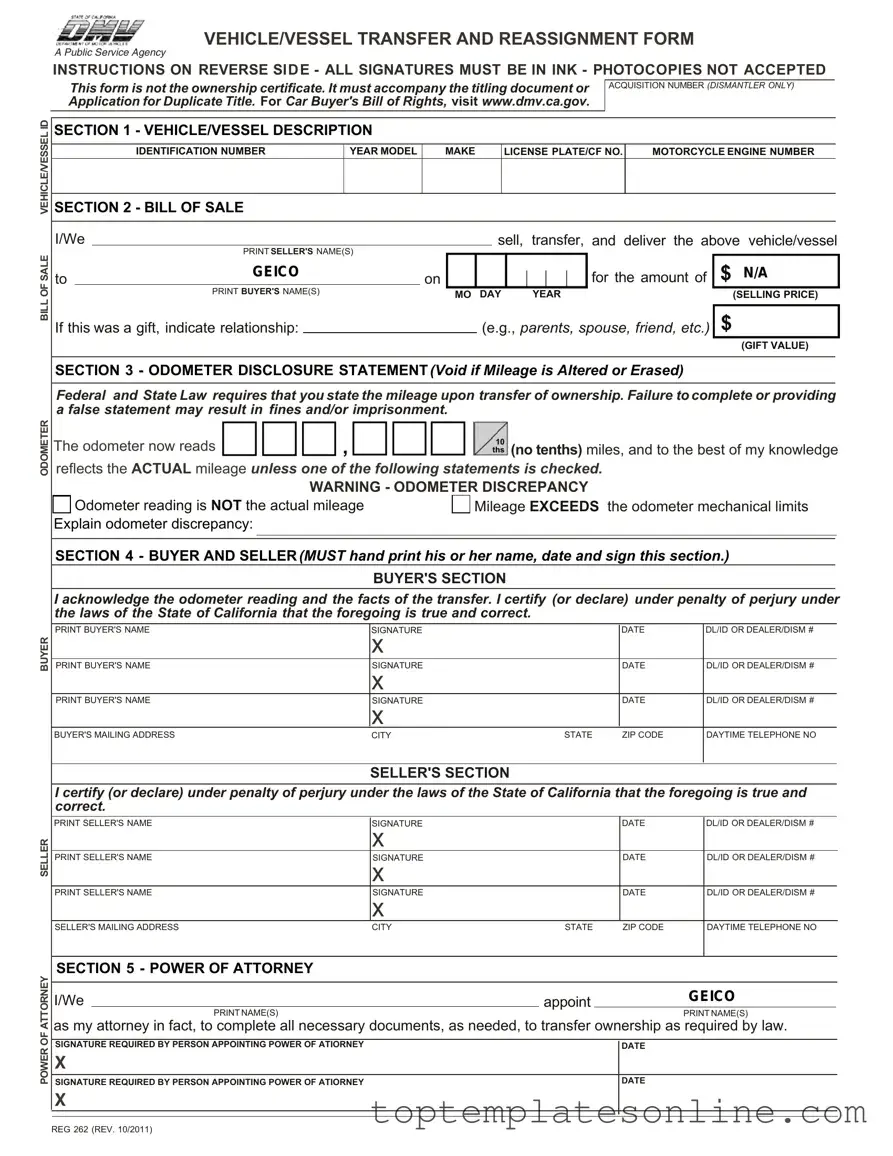The California Form REG 262, known as the Vehicle/Vessel Transfer and Reassignment Form, plays a crucial role in the process of transferring ownership of vehicles and vessels within the state. This form is essential for both buyers and sellers, as it must accompany the title or an application for a duplicate title. It is important to note that the REG 262 is not a certificate of ownership; rather, it serves as a necessary document to facilitate the legal transfer of a vehicle or vessel. The form includes several sections that gather important information, such as the vehicle or vessel identification details, the bill of sale, and odometer disclosure statements. Each section must be completed accurately, ensuring that the buyer and seller provide their names, signatures, and other relevant details. Additionally, if the transfer involves a gift, the relationship between the parties must be indicated. The odometer disclosure section is particularly critical, as it requires the seller to report the mileage at the time of sale, with strict penalties for any inaccuracies. To further streamline the process, the form allows for the appointment of a power of attorney, enabling another individual to act on behalf of the seller or buyer in completing necessary documents. Understanding the key aspects of the REG 262 is vital for anyone involved in the sale or purchase of a vehicle or vessel in California.
